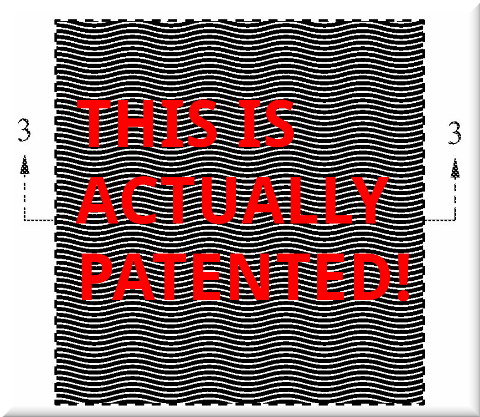

Smartphone maker Coolpad has sued Xiaomi for infringement of three patents that are associated with the user interface.
The company Coolpad asked a Shenzhen court to cease selling Xiaomi smartphones five.
“Interesting patents – Voting just got interesting, Wear healthy, stay healthy!, Supreme Court issues notice to Nuziveedu Seeds, Coolpad Sues Xiaomi, Brazil & EU reject Gilead’s patent on hepatitis C & HIV drugs, Peripheral claiming versus Central claiming, Patent Tip of the week and other Weekly Patent News,” presented by the Patent attorneys and experts of BananaIP Counsels, India’s leading Patent Firm.
A lawsuit filed in China last week accused Beijing-based Xiaomi of developing mobile devices which contain patent infringing technology.
The complaint was filed at Jiangsu Province Nanjing Intermediate People’s Court on Thursday, May 10.
Yulong Computer Telecommunication Scientific (Shenzhen) Company, a provider of telecommunications equipment and a subsidiary of Coolpad Group, initiated the suit.
The complaint accused Xiaomi, a developer of consumer electronics and software, of infringing one of Yulong’s invention patents (Chinese patent number ZL200610034036.7). The patent covers a “multi-mode mobile communication terminal interface system and method for call recording”.
Japanese conglomerate Kyocera has very rarely asserted its patent rights in recent years; but a recent deal with Bosch and an assertion against another German supplier show that even in traditionally conservative Japan, the potential prize represented by the auto sector is too big to ignore. Last Tuesday, the company announced a licence agreement with Robert Bosch Car Multimedia, a subsidiary of industrial conglomerate Bosch. The noticed disclosed only that the German firm would gain access to haptic feedback technology for use in automotive solutions. This deal came just one month after Kyocera launched a German patent litigation suit against another auto parts supplier – Preh GmbH...
Apple and Samsung are back in court over a patent dispute that started back in 2011. This will be the third court appearance over the same five design infringements. Two of the patents involve the front and back look of the original iPhone. A third violation is over the GUI (graphical user interface), and two others concern software functionalities such scrolling and pinch to zoom gestures.
In 2011, Apple sued Samsung claiming the South Korean company’s phones, including the Galaxy S2, copied the iPhone in both physical and software design. The Cupertino-based firm was awarded over one billion dollars in 2012. The judge in the case reduced the award to around $940 million citing that the jury had made an error in its calculations. A second trial resulted in the award amount being further reduced to about $400 million.
A district court trial. A retrial, after part of the verdict was vacated. An appeal to the Federal Circuit. A Supreme Court opinion with a remand to the Federal Circuit. A remand from the Federal Circuit back to the district court. Seven years after Apple originally filed suit against Samsung, we’re right back in Judge Koh’s courtroom for the sixth part of this dispute, a third jury trial on damages.
[...]
If design patents on a small piece of a product can regularly be applied to the profits on the entire product, it will have a huge impact on whole swaths of industry—many of them far from the high-tech sector. Those industries will be placed at risk of in terrorem threats of litigation and chilling effects on product design and development. Disgorgement of total profits on the whole product for a design patent covering only a small component will reduce willingness to work with smaller suppliers who can’t indemnify the manufacturer. It will make manufacturers seriously reconsider providing open access to their systems. It might even drive a wave of design patent troll lawsuits.
There we go again. For the fourth time in six years (minus a few months), Apple and Samsung will square off again, starting today, in the San Jose building of the United States District Court for the Northern District of California. It's the third trial in the first Apple v. Samsung case (the related complaint was filed in April 2011) and the fourth in total (if we add the 2014 trial in the second case, filed in 2012).
Via Twitter I provided the parties with a link to the Guinness Book of Records website. This might be a new record: four trials between the same two parties in one federal district court within less than six years.
In some ways, it's déjà vu all over again, or Groundhog Day, as Korean-American Judge Lucy H. Koh calls it. But not in all ways. Samsung scored a major victory in the Supreme Court in 2016 on what should be considered the appropriate article of manufacture for determining design patent damages in the form of a disgorgement of unapportioned infringer's profits under 35 U.S.C. €§ 289. Apple had been awarded huge amounts at two previous trials, based on a standard overthrown by the highest court in the land. Now it will be up to a jury whether the ultimate outcome will, or will not, be reflective of Samsung's SCOTUS victory.
There's the legal part, which is a test that the U.S. government laid out in an amicus curiae brief filed with the Supreme Court. That one is suboptimal, and people far more qualified than me to discuss design patent law find it wanting. There are various restrictions on the parties, especially on Samsung, as to what kind of evidence and testimony they're allowed to present and what kinds of argument they're allowed to raise. And what may ultimately decide is psychology: whether the jury will, or will not, buy Apple's portrayal of Samsung as a copyist.
The court granted plaintiff's motion to reconsider an earlier order granting defendant a new damages trial and upon reconsideration reinstated the jury's $75 million verdict because the extensive evidence of unaccused products was not reflected in the verdict.